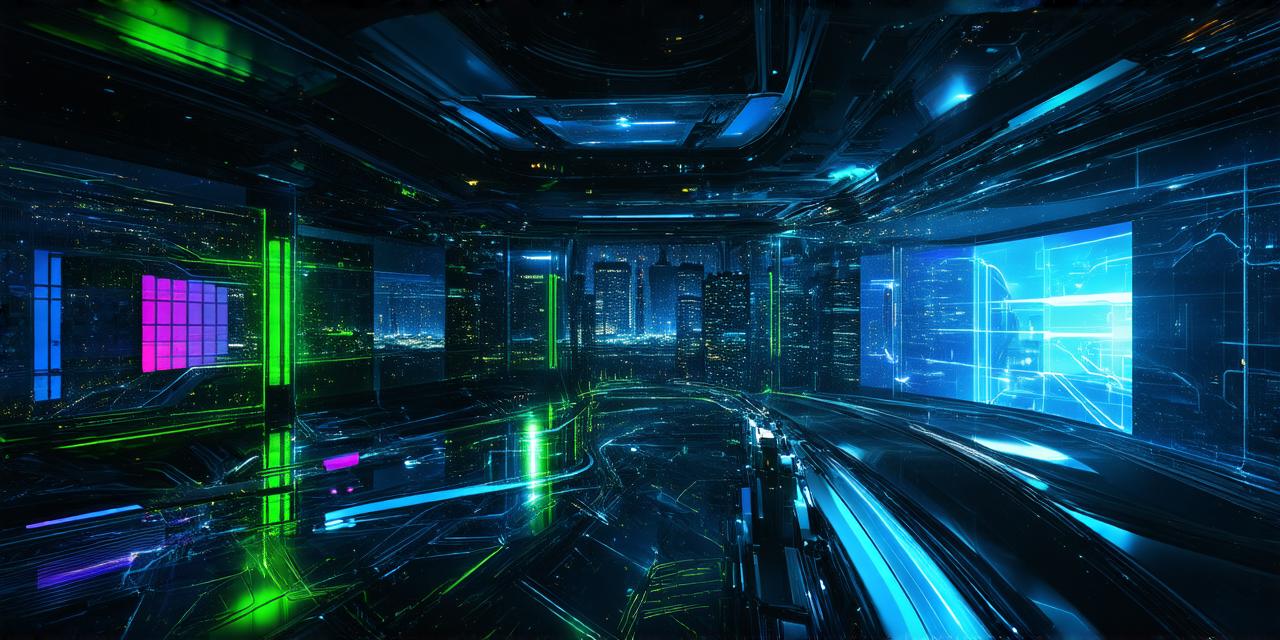Virtual reality (VR) technology has been around for over 50 years, but it’s only in the last decade that we’ve seen a significant shift in how VR is being used. From gaming to education and healthcare, VR technology is transforming the way we live, work, and interact with the world.
But what is the main purpose of VR technology? In this article, we will explore the main purpose of VR technology and its potential applications across various industries.
Virtual Reality Technology: An Overview
Virtual reality technology creates a simulated environment that can be experienced through a headset or other devices. The idea is to create an immersive experience that feels like being in a real-world environment.
This technology has the ability to transport people into different environments, allowing them to experience things that they might not otherwise have the opportunity to see or do.
The main purpose of VR technology is to provide a unique and immersive experience that can be used for various applications across various industries.
Virtual Reality in Education
One of the most exciting uses of VR technology is in education. Virtual reality can be used to create immersive learning environments that allow students to explore complex concepts and ideas in a way that’s not possible with traditional classroom settings.
For example, virtual reality can be used to simulate historical events or scientific experiments, allowing students to experience them firsthand.
Virtual Reality in Healthcare
Another industry where VR technology has the potential to make a significant impact is healthcare. Virtual reality can be used to create immersive training environments for doctors and nurses, allowing them to practice procedures in a safe and controlled environment.
It can also be used to create virtual reality simulations of surgical procedures, allowing patients to experience what it will be like before they undergo surgery.
Additionally, VR technology can be used to help patients with chronic conditions like PTSD or anxiety by providing a controlled environment that can be customized to their needs.
Virtual Reality in Gaming
The gaming industry has been at the forefront of virtual reality technology for years, and it’s no surprise that VR games are some of the most popular uses of this technology. Virtual reality games allow players to immerse themselves in a game like never before, providing a unique and engaging experience that can be difficult to replicate with traditional gaming devices.
Virtual Reality in Architecture and Design
Virtual reality technology has also found its way into the world of architecture and design. With VR, architects and designers can create immersive experiences that allow clients to see what a building or space will look like before it’s even built.
This can help save time and money by reducing the need for physical models or prototypes.
Virtual Reality in Retail
Virtual reality technology is also being used in the retail industry to create immersive shopping experiences. With VR, customers can try on clothes, explore furniture, and even see how a home renovation project will look before making a purchase decision.
This can help retailers increase sales by providing a more engaging and interactive shopping experience for their customers.
The Main Purpose of VR Technology: Enhancing the User Experience
Ultimately, the main purpose of VR technology is to enhance the user experience. Whether it’s in education, healthcare, gaming, architecture, or retail, virtual reality technology provides a unique and immersive experience that can help people better understand complex concepts, practice procedures, or simply have fun.
Case Study: The Use of Virtual Reality in Training
One great example of how VR technology is being used to enhance the user experience is in training. Virtual reality can be used to create immersive training environments that allow employees to practice procedures in a safe and controlled environment.
For example, virtual reality simulations can be used to train pilots, allowing them to experience different flight scenarios without putting themselves or others at risk.

Expert Opinion: The Future of Virtual Reality Technology
When it comes to the future of virtual reality technology, experts believe that we’re just at the beginning of what this technology can do. With advancements in hardware and software, VR technology is becoming more accessible and affordable, allowing more people to experience its potential.
As the technology continues to evolve, we can expect to see even more innovative applications across various industries.
Real-Life Examples of Virtual Reality Technology
One real-life example of virtual reality technology in action is the use of VR in the automotive industry. Car manufacturers are using VR simulations to design and test new cars, allowing them to make changes and improvements before they go into production.
This can help reduce costs and improve efficiency, making it easier for car manufacturers to create cars that meet customer needs and expectations.
Another real-life example of virtual reality technology is the use of VR in the tourism industry. Some hotels are using VR technology to allow guests to explore their properties before they even arrive, providing a more personalized and immersive experience.
Additionally, some museums and art galleries are using VR technology to create virtual tours that allow visitors to experience exhibits in a way that’s not possible with physical tours.
Summary
Virtual reality technology has the potential to revolutionize the way we live, work, and interact with the world around us. Whether it’s in education, healthcare, gaming, architecture, or retail, virtual reality technology provides a unique and immersive experience that can be difficult to replicate with traditional methods.
As the technology continues to evolve, we can expect to see even more innovative applications across various industries. Ultimately, the main purpose of virtual reality technology is to enhance the user experience, providing new ways of interacting with the world around us.
